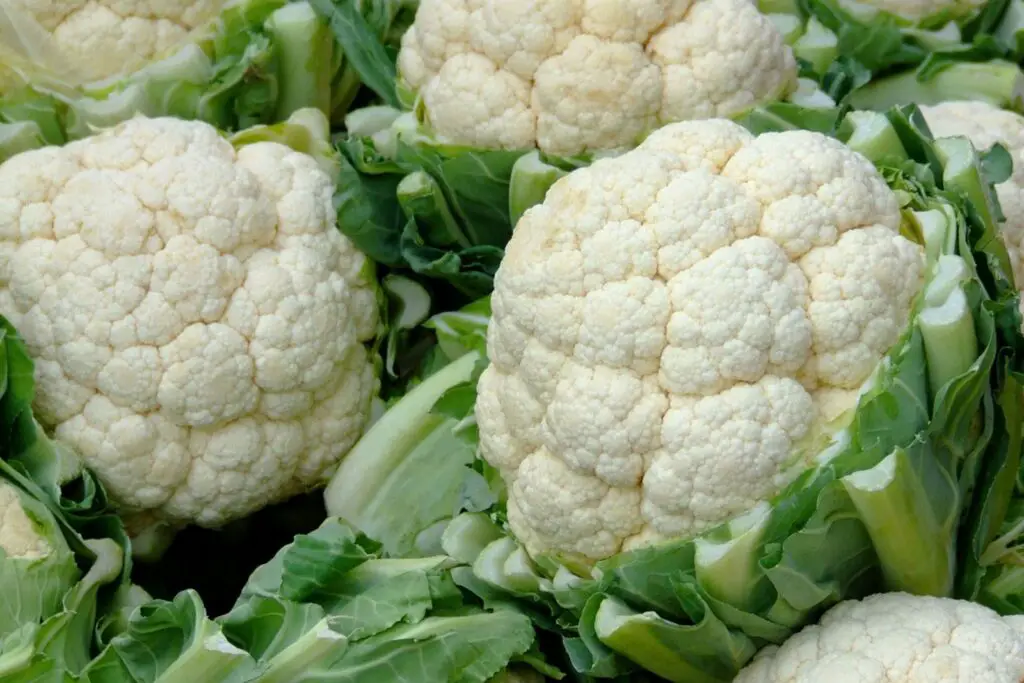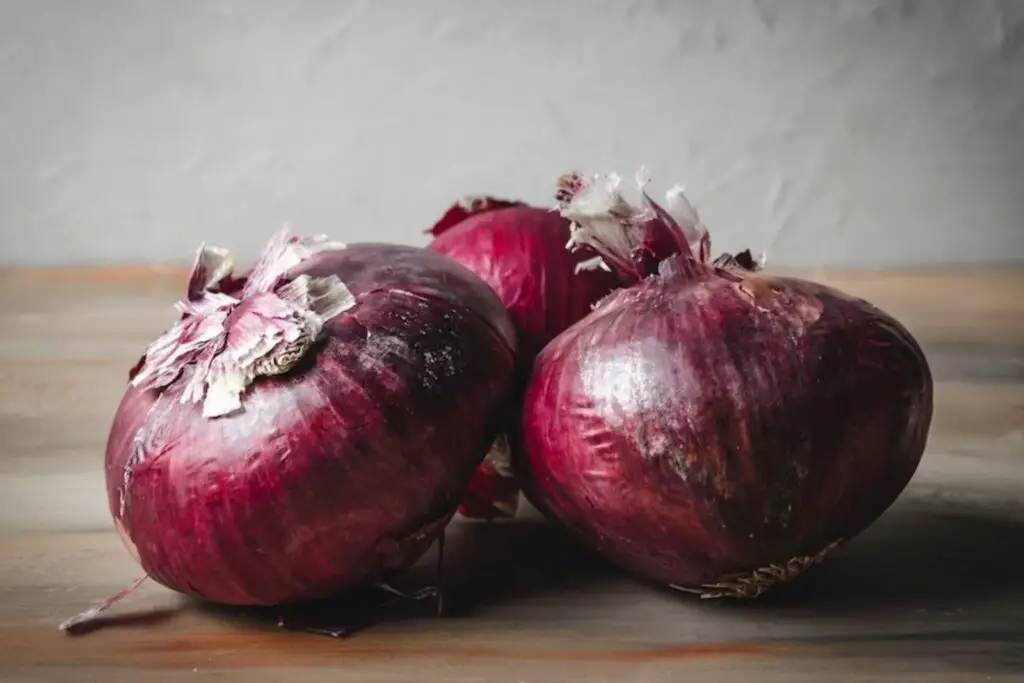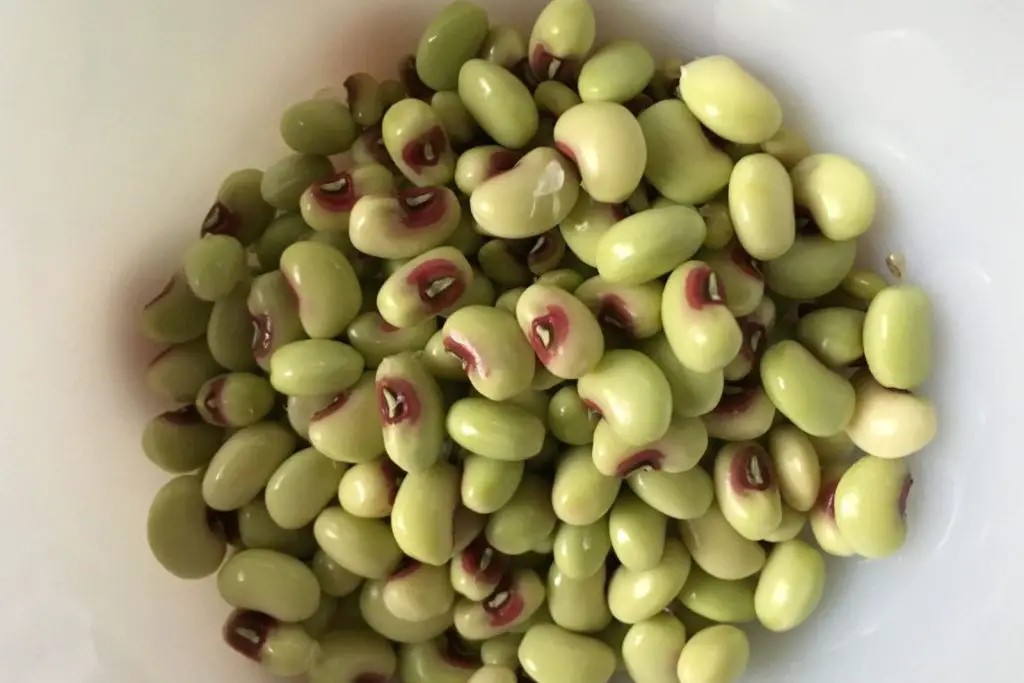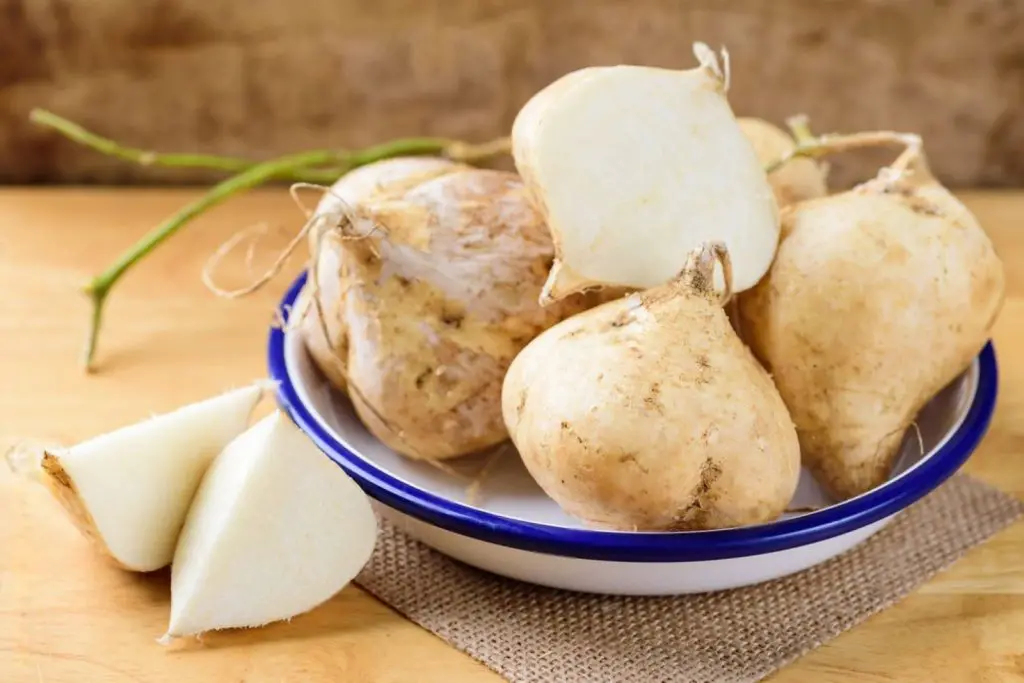
Ichiban eggplant, with its slender and tender profile, is a delightful addition to various culinary creations. These eggplants are cherished for their mild, sweet flavor and versatility in the kitchen. Whether you’ve harvested an abundant supply from your garden or stumbled upon a great deal at the farmer’s market, freezing ichiban eggplants can be a smart way to preserve their quality and enjoy them long after the harvest season has passed. In this article, we’ll walk you through a step-by-step guide on how to freeze ichiban eggplants effectively, ensuring they maintain their exceptional taste and texture for future culinary adventures.
Here’s a comprehensive guide on how to freeze ichiban eggplants:
- Step 1: Select fresh ichiban eggplants
- Step 2: Wash and trim the eggplants
- Step 3: Slice the eggplants
- Step 4: Blanch the ichiban eggplants
- Step 5: Drain and dry the eggplants
- Step 6: Arrange the eggplants for freezing
- Step 7: Flash-freeze the ichiban eggplants
- Step 8: Package and seal the eggplants
- Step 9: Label and date the packages
- Step 10: Store in the freezer
Step 1: Select fresh ichiban eggplants
The first step in successfully freezing ichiban eggplants is to begin with the right selection of these slender, flavorful vegetables. Selecting fresh, ripe ichiban eggplants is crucial to ensure that the frozen result retains its exceptional taste and texture. Here’s why this step is so important:
- Firmness: Fresh ichiban eggplants should feel firm to the touch. When you gently press the skin, it should yield slightly but then spring back. A firm texture indicates that the eggplant is at its prime and not overripe, which can result in a mushy texture when frozen and thawed.
- Color: Look for ichiban eggplants that are vibrant in color. The ideal color varies depending on the type of eggplant, but generally, they should have a deep, rich hue. A vibrant color indicates freshness and maturity, which contributes to better flavor and texture in the final dish.
- Blemishes and Bruises: Examine the eggplants closely to ensure they are free from blemishes or bruises. These imperfections can be indicators of age or mishandling, and they may affect the quality of the eggplants after freezing. Choosing blemish-free eggplants ensures a cleaner and more enjoyable eating experience later on.
- Peak Ripeness: The best time to freeze ichiban eggplants is when they are at their peak of ripeness. This is when they are bursting with flavor and have the ideal balance of firmness and tenderness. Freezing ichiban eggplants at this stage helps lock in their optimal taste and texture, ensuring a satisfying culinary experience when you use them in your recipes.
Step 2: Wash and trim the eggplants
After carefully selecting fresh ichiban eggplants in the first step, the next crucial stage in the freezing process is to prepare them properly. This involves washing, trimming, and optionally peeling the eggplants. Here’s why this step is essential:
- Dirt and Residue Removal: Ichiban eggplants, like many vegetables, may have dirt, dust, or residue on their skin, especially if they were grown outdoors. Washing them under running water ensures that any contaminants are removed, resulting in cleaner and safer food for consumption. Proper washing also removes any potential pathogens that could be present on the surface.
- Stem Trimming: Trimming the stem ends of the ichiban eggplants is important for several reasons. Firstly, it removes the tough, woody part of the stem, which is not enjoyable to eat and can be difficult to chew. Secondly, it enhances the visual appeal of the eggplant slices or pieces, making them more aesthetically pleasing in your recipes. Lastly, removing the stem ends can improve the overall texture of the frozen eggplants, as the stems can be fibrous and tough even when cooked.
- Peeling (Optional): The decision to peel ichiban eggplants is a matter of personal preference and recipe requirements. Some people prefer the slightly chewy texture of the skin and choose to leave it intact. Others may opt to peel the skin, especially if they want a smoother and more tender texture in their dishes. Whether to peel or not depends on your intended use and the desired final texture of the eggplants in your recipes.
Step 3: Slice the eggplants
Once you’ve washed and trimmed your ichiban eggplants, the next step in preparing them for freezing is to slice them into your desired shapes and sizes. This step is essential for several reasons and plays a significant role in the final quality of your frozen eggplants. Here’s why it’s important:
- Versatility in Cooking: Slicing the ichiban eggplants allows you to adapt them to various recipes and cooking methods. Depending on your culinary preferences and the dishes you plan to prepare, you can cut the eggplants into rounds, lengthwise strips, or cubes. This versatility means you can use them in stir-fries, casseroles, pasta dishes, or as a side dish.
- Even Cooking: Uniform slices ensure even cooking. When the eggplant pieces are of the same size, they will cook at the same rate, preventing some pieces from becoming overcooked while others remain undercooked. This consistency in cooking contributes to the overall quality and taste of your dishes.
- Consistent Freezing: Uniformly sliced eggplants also freeze more consistently. When all the pieces are of similar size, they freeze at the same rate, reducing the likelihood of ice crystals forming and causing freezer burn. This helps maintain the texture and flavor of the eggplants during storage.
- Portion Control: Slicing the eggplants into your desired shapes and sizes also allows for better portion control. You can freeze them in portions that are convenient for your cooking needs. This makes it easier to take out just the right amount of frozen eggplant for a specific recipe without having to thaw the entire batch.
Can I freeze Ichiban eggplant whole or should I slice it first?
While you can freeze Ichiban eggplant whole, slicing it before freezing is more practical. Sliced eggplant allows for easier portioning, cooking, and thawing. It also facilitates even freezing and reduces the risk of clumping, making it a preferred method for many.
Step 4: Blanch the ichiban eggplants
Blanching is a critical step in the process of freezing ichiban eggplants and is essential for preserving their color, texture, and flavor. This step involves briefly cooking the eggplant slices in boiling water and then rapidly cooling them down. Here’s why blanching is so crucial:
- Preserving Color: One of the primary benefits of blanching is that it helps retain the vibrant color of the eggplant. The heat breaks down enzymes that can cause discoloration and loss of the appealing purple hue. When properly blanched, the ichiban eggplants maintain their attractive color even after freezing and thawing.
- Texture Maintenance: Blanching partially cooks the eggplant, which can be beneficial for its texture. It softens the flesh slightly, making it more suitable for freezing without becoming mushy. This ensures that the frozen eggplants maintain a desirable texture when you use them in your recipes.
- Flavor Preservation: While blanching does introduce some heat to the eggplants, it is a brief process that doesn’t significantly affect their flavor. The quick blanching and subsequent cooling preserve the eggplants’ natural taste, allowing them to shine in your dishes without any off-flavors.
- Enzyme Inactivation: Enzymes present in fresh vegetables can lead to undesirable changes in color, flavor, and texture during freezing. Blanching deactivates these enzymes, ensuring that the ichiban eggplants maintain their quality over an extended period in the freezer.
Here’s how to blanch ichiban eggplants effectively:
- Bring a pot of water to a rolling boil. Make sure there’s enough water to fully submerge the eggplant slices.
- While the water is boiling, prepare a bowl of ice water. Adding ice cubes to the water ensures it’s as cold as possible.
- Carefully lower the sliced ichiban eggplants into the boiling water using a slotted spoon or a mesh strainer. Allow them to blanch for 2-3 minutes. The exact time may vary depending on the thickness of the slices, but the goal is to slightly soften them without fully cooking.
- After blanching, promptly transfer the eggplant slices to the bowl of ice water. This rapid cooling process halts the cooking and preserves their crispness and color.
- Once the eggplants are completely cooled, remove them from the ice water and drain them thoroughly.
Can I freeze Ichiban eggplant without blanching it first?
Freezing Ichiban eggplant without blanching is possible, but blanching is recommended to preserve its quality. Without blanching, the eggplant may experience color loss and texture changes, resulting in a less desirable product when thawed. Blanching helps inactivates enzymes and enhances the overall freezing process for better results.
Step 5: Drain and dry the eggplants
Following the blanching process, the next important step in preparing ichiban eggplants for freezing is to ensure they are thoroughly drained and dried. This step is crucial for several reasons and contributes to the overall quality of the frozen eggplants. Here’s why it’s essential:
- Removing Excess Moisture: Blanching introduces moisture to the surface of the eggplant slices. Excess moisture can lead to the formation of ice crystals during freezing, which can negatively impact both the texture and flavor of the frozen eggplants. Draining and drying the slices effectively removes this excess moisture.
- Preventing Freezer Burn: Moisture on the surface of the eggplants can also contribute to freezer burn, a condition where the moisture on the surface of the food turns into ice crystals. These ice crystals can affect the taste and texture of the frozen food. Properly draining and drying the eggplants reduces the risk of freezer burn, ensuring a better final product.
- Optimal Texture: Thoroughly dried eggplants maintain a better texture when frozen. Excess moisture can lead to a mushy or soggy texture when thawed and cooked. By removing this moisture, the eggplants retain a crisper texture, making them more appealing in a variety of dishes.
Here’s how to effectively drain and dry ichiban eggplants after blanching:
- Place the blanched eggplant slices in a colander or on a clean kitchen towel or paper towels.
- Allow the eggplants to sit for a few minutes to let excess moisture drain away naturally. You can gently shake the colander or lightly press the slices between layers of paper towels to encourage drainage.
- If you’re using paper towels, gently pat the eggplant slices to remove any remaining moisture on the surface.
It’s important to note that the goal is to remove as much moisture as possible without applying excessive pressure or squeezing the eggplant slices, which could result in texture loss.
Step 6: Arrange the eggplants for freezing
After you have successfully blanched, drained, and dried the ichiban eggplants, the next step in preparing them for freezing is arranging them on a baking sheet in a single layer. This step, known as pre-freezing, is essential to prevent the eggplant slices from sticking together when they freeze. Here’s why this step is crucial:
- Preventing Clumping: Ichiban eggplant slices have a tendency to stick together if they are placed in the freezer immediately after drying. When they freeze in clumps or clusters, it becomes challenging to separate individual slices when you want to use them in your recipes. Arranging them in a single layer helps prevent this issue.
- Even Freezing: Placing the slices in a single layer ensures that they freeze more evenly. When the slices are not touching each other, the cold air in the freezer can circulate around each slice, freezing them uniformly. This uniform freezing helps maintain the desired texture and quality of the eggplants.
- Ease of Portioning: By pre-freezing the ichiban eggplant slices separately, you make it easier to portion out the amount you need for a particular recipe without having to thaw the entire batch. This convenience is particularly useful when you want to use frozen eggplants for quick stir-fries or side dishes.
Here’s how to arrange the eggplants for pre-freezing:
- Line a baking sheet with parchment paper or a silicone baking mat to prevent sticking.
- Place the blanched and dried ichiban eggplant slices on the baking sheet in a single layer. Ensure that the slices are not touching or overlapping.
- If you have a large quantity of eggplants, you can use multiple baking sheets or work in batches to ensure that all the slices are adequately spaced.
Step 7: Flash-freeze the ichiban eggplants
After arranging the blanched and dried ichiban eggplant slices on a baking sheet in a single layer, the next crucial step in the freezing process is flash-freezing. Flash-freezing involves placing the baking sheet in the freezer for a few hours or until the individual eggplant slices are frozen. This step is essential for several reasons, and it ensures the quality of the final product. Here’s why flash-freezing is important:
- Preventing Clumping: Flash-freezing ensures that each ichiban eggplant slice freezes separately. When items are placed in the freezer without this step, they tend to stick together, forming clumps or clusters. By flash-freezing, you maintain the integrity of each slice, making it easier to portion out and use in your recipes without the need to thaw an entire batch.
- Minimizing Ice Crystal Formation: Flash-freezing promotes the rapid freezing of the eggplant slices. When items freeze slowly, ice crystals have more time to form, which can negatively affect the texture and taste of the food. By freezing quickly, you minimize the size of ice crystals, helping to preserve the quality of the ichiban eggplants.
- Ensuring Even Freezing: Flash-freezing allows for even freezing of the slices. Since they are arranged in a single layer on the baking sheet, cold air can circulate around each slice, ensuring that they all freeze at the same rate. Even freezing contributes to consistent texture and flavor when you use the frozen eggplants in your dishes.
Here’s how to flash-freeze ichiban eggplants effectively:
- Once you’ve arranged the eggplant slices on a baking sheet, place the sheet in the freezer.
- Allow the slices to remain in the freezer for a few hours or until they are firm and solid. The exact freezing time may vary depending on your freezer’s temperature and the thickness of the slices.
- Check the slices periodically to ensure they are freezing individually and not sticking together. If you notice any slices starting to clump, gently separate them to maintain their individual integrity.
- Once the eggplant slices are fully frozen, they are ready to be transferred into airtight freezer bags or containers for long-term storage.
Step 8: Package and seal the eggplants
After successfully flash-freezing the ichiban eggplant slices, the next crucial step is to package and seal them for long-term storage. This step involves transferring the frozen slices into airtight freezer bags or containers. Here’s why this step is essential and how to do it properly:
- Preventing Freezer Burn: Packaging the ichiban eggplant slices in airtight containers is essential for preventing freezer burn. Freezer burn occurs when food is exposed to air, causing moisture on the food’s surface to evaporate and form ice crystals. This can lead to changes in texture and flavor. Airtight packaging helps maintain the quality of the frozen eggplants.
- Minimizing Odor Transfer: Airtight packaging also helps prevent the absorption of odors from other items in the freezer. Ichiban eggplants can easily absorb odors from strongly scented foods, affecting their taste and aroma. Proper sealing ensures that your frozen eggplants remain free from unwanted flavors.
- Longer Storage Life: Airtight packaging extends the shelf life of the frozen ichiban eggplants. It prevents moisture loss and exposure to air, which can lead to freezer burn and degradation of quality over time. With proper sealing, you can enjoy the preserved eggplants for an extended period.
Here’s how to package and seal ichiban eggplant slices for freezing:
- Prepare airtight freezer bags or containers. Make sure they are clean and in good condition.
- Transfer the individually frozen ichiban eggplant slices into the bags or containers. If you’re using bags, remove as much air as possible before sealing. A vacuum sealer can be particularly effective for this purpose.
- If you’re using containers, fill them to the top to minimize the air space. For bags, try to remove as much air as possible by pressing gently on the bag as you seal it.
- Seal the bags or containers securely to ensure an airtight seal. If you’re using bags, consider double-bagging for added protection against air and moisture infiltration.
Step 9: Label and date the packages
The final step in the process of freezing ichiban eggplant slices is to label and date the packages before placing them in the freezer. Proper labeling is a simple yet crucial practice that offers several benefits:
- Identification: Labeling the packages with the contents, in this case, “ichiban eggplant slices,” allows you to quickly identify what’s inside each package without the need to open it. This is especially helpful when you have multiple items stored in the freezer.
- Freezing Date: Including the date of freezing on each package is essential for keeping track of the age of the frozen food. It helps you prioritize the use of older items and ensures that you don’t accidentally keep them in the freezer for too long.
- Preventing Confusion: Proper labeling prevents confusion in the freezer. When you have clear labels on each package, you’re less likely to mistake the contents for something else or forget what you’ve stored. This saves time and reduces food waste.
- Optimal Rotation: Labeling and dating packages enable you to practice proper food rotation. You can use the older frozen items first and keep the newer ones for later use, ensuring that nothing goes to waste.
- Recipe Planning: Knowing the contents and freezing date of each package makes it easier to plan your meals. You can incorporate frozen ichiban eggplant slices into your recipes with confidence, knowing their quality and age.
Here’s how to label and date the packages effectively:
- Use a permanent marker or freezer-safe labels to write the contents (“ichiban eggplant slices”) and the date of freezing on each package.
- Ensure that the labeling is clear and legible. If using labels, affix them securely to the package.
- If you have multiple packages of ichiban eggplant slices, consider organizing them by date. This way, you can easily access the oldest packages first.
Step 10: Store in the freezer
The last step in the process of freezing ichiban eggplant slices is to place the sealed packages in your freezer. Proper storage in the freezer is crucial for maintaining the quality and safety of the frozen eggplants. Here’s why this step is essential and how to do it correctly:
- Preservation of Quality: Storing the sealed packages in the freezer ensures that the ichiban eggplant slices remain at a constant low temperature. This prevents the growth of microorganisms and enzymatic reactions that can degrade the quality of the frozen food.
- Preventing Freezer Burn: The cold, dry environment of the freezer helps prevent freezer burn, which can occur when food is exposed to air for extended periods. Properly sealed packages minimize air contact and maintain the quality of the eggplants.
- Longer Storage Life: Ichiban eggplants, when frozen and stored at the recommended temperature of 0°F (-18°C) or lower, can be preserved for an extended period. While they are safe to eat beyond this time frame, for the best quality, it’s recommended to use them within 8-12 months.
Here’s how to store ichiban eggplant slices in the freezer correctly:
- Ensure that the freezer is set to a constant temperature of 0°F (-18°C) or lower. Check and adjust the freezer’s temperature settings if necessary.
- Place the labeled and dated packages of ichiban eggplant slices in the freezer. Ensure that they are positioned in a way that allows for proper air circulation and that they are not squeezed or crushed by other items.
- Keep an eye on the organization within your freezer. Arrange packages in a way that allows you to access the oldest packages first, following the “first in, first out” (FIFO) principle to use them in a timely manner.
- Avoid frequent opening and closing of the freezer door, as this can lead to temperature fluctuations that may affect the quality of the stored items.
Other related questions
How do I defrost Ichiban eggplant?
To defrost Ichiban eggplant, transfer the frozen slices from the freezer to the refrigerator. Allow them to thaw slowly for several hours or overnight. Alternatively, you can defrost them quickly by placing the frozen slices in a sealed plastic bag and submerging the bag in cold water, changing the water every 30 minutes until the eggplants are thawed.
Can I refreeze Ichiban eggplant?
It is generally not recommended to refreeze Ichiban eggplant once it has been thawed. Repeated freezing and thawing can degrade the texture and quality of the eggplant, potentially resulting in a mushy or less appealing product. To minimize food waste, it’s advisable to only thaw the amount of eggplant you plan to use in a single meal and avoid refreezing any leftover thawed portions.
How do I know if the Ichiban eggplant has gone bad after being frozen?
To determine if frozen Ichiban eggplant has gone bad, inspect its appearance and smell. If the eggplant appears discolored, has ice crystals, or has developed freezer burn (dry, white, or brownish patches), it may be past its prime. Additionally, if the eggplant emits an off or rancid odor, it is likely spoiled and should be discarded. Always prioritize food safety, and when in doubt, err on the side of caution and discard any frozen eggplant that appears or smells suspicious.
What are some recipe ideas for using frozen Ichiban eggplant?
Frozen Ichiban eggplant can be used in various recipes, including stir-fries, casseroles, and pasta dishes. Thaw and pat dry before incorporating it into your favorite recipes. It’s versatile and adds a unique flavor and texture to dishes like Eggplant Parmesan, Ratatouille, or stir-fried with other vegetables and sauces.
Can I freeze Ichiban eggplant that has been cooked in a dish?
Yes, you can freeze Ichiban eggplant that has been cooked in a dish. However, it’s essential to consider that freezing can alter the texture of cooked eggplant. When thawed, it may have a softer or somewhat different texture than when freshly cooked. Be sure to cool the dish to room temperature before freezing it in airtight containers, and when reheating, expect some textural changes while still maintaining flavor.
Is it necessary to salt Ichiban eggplant before freezing?
Salting Ichiban eggplant before freezing is not necessary but can be done as a pre-treatment. Salting helps draw out excess moisture, reducing potential sogginess upon thawing. If salting, rinse and pat the eggplant dry before proceeding with the freezing process.








